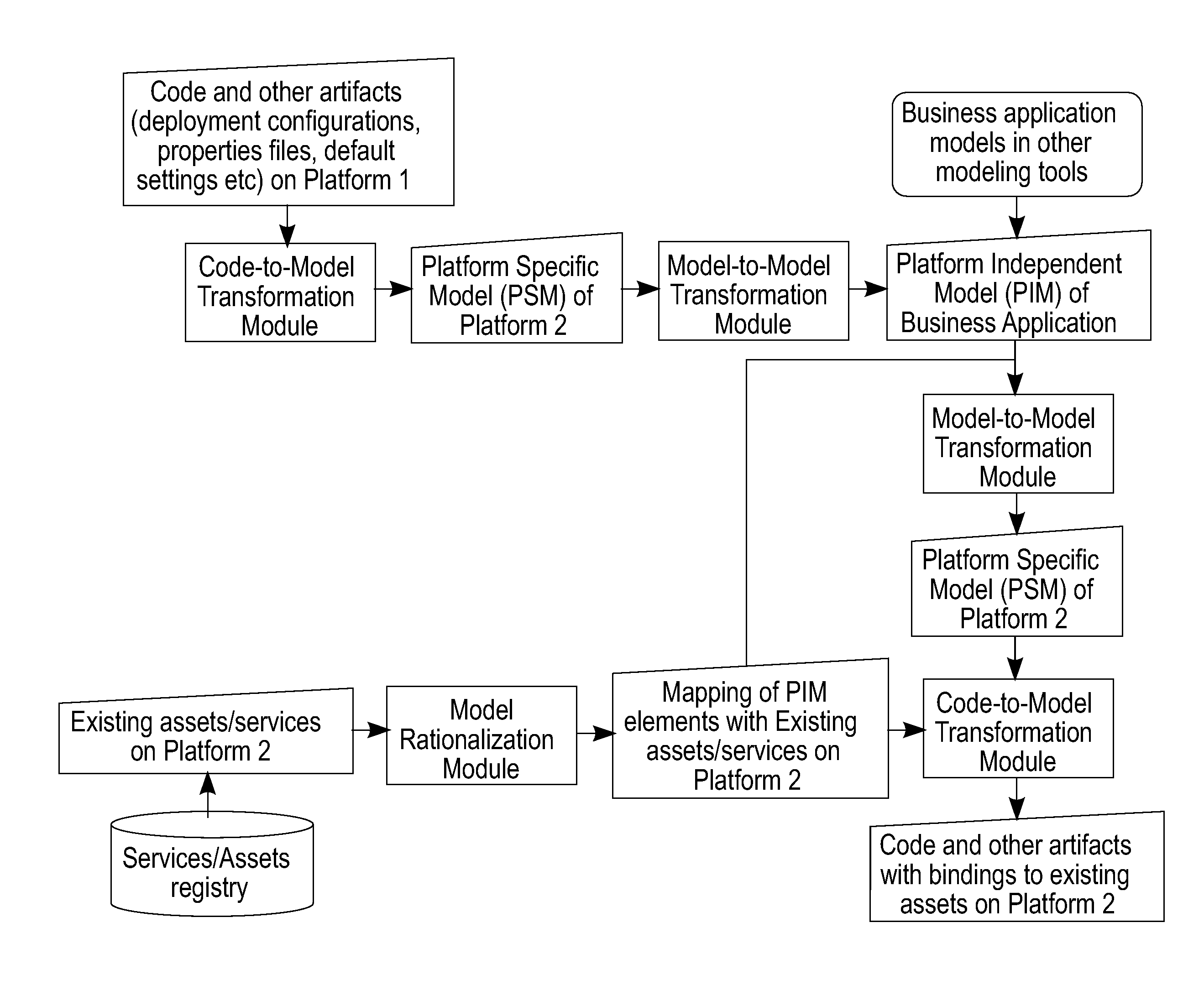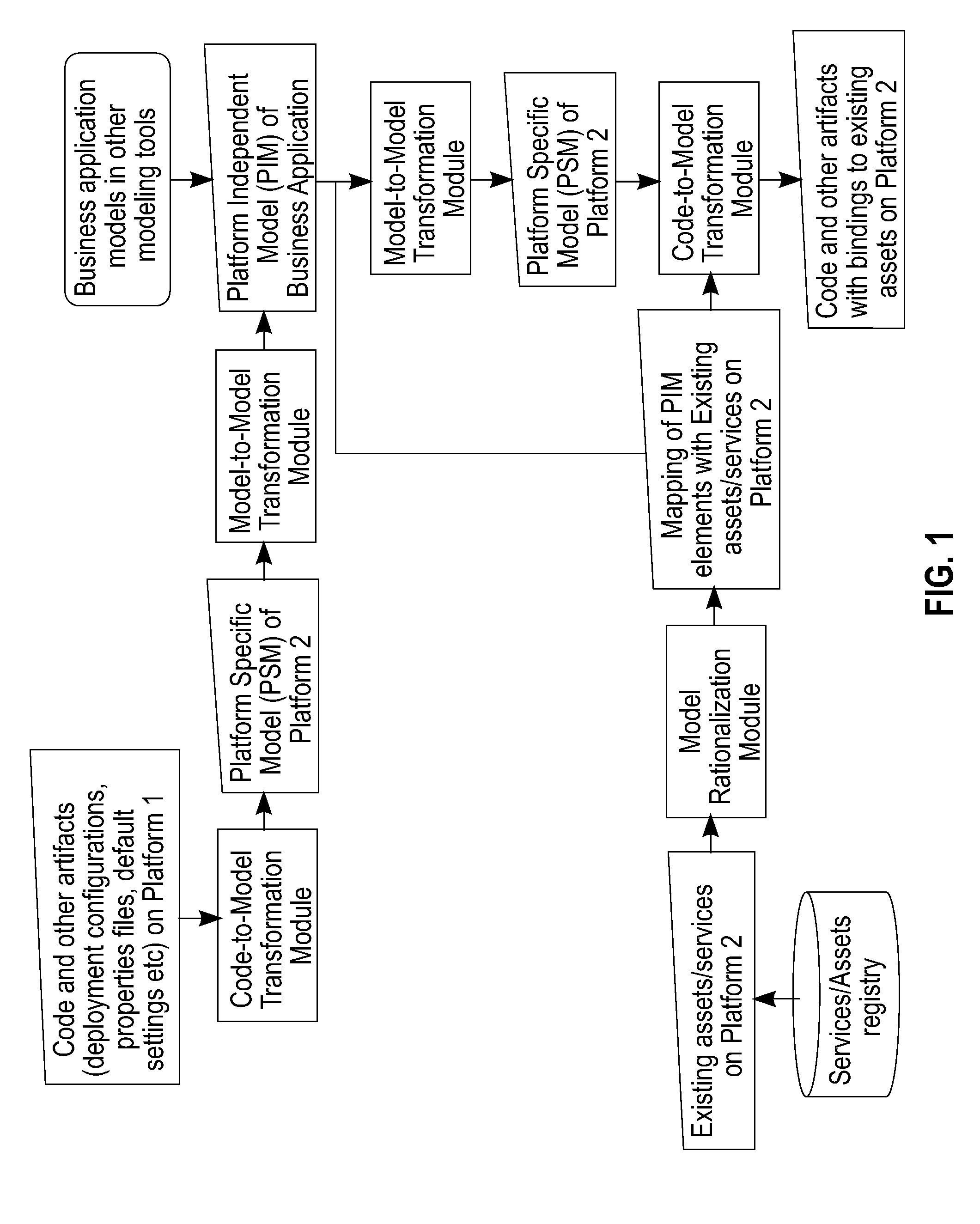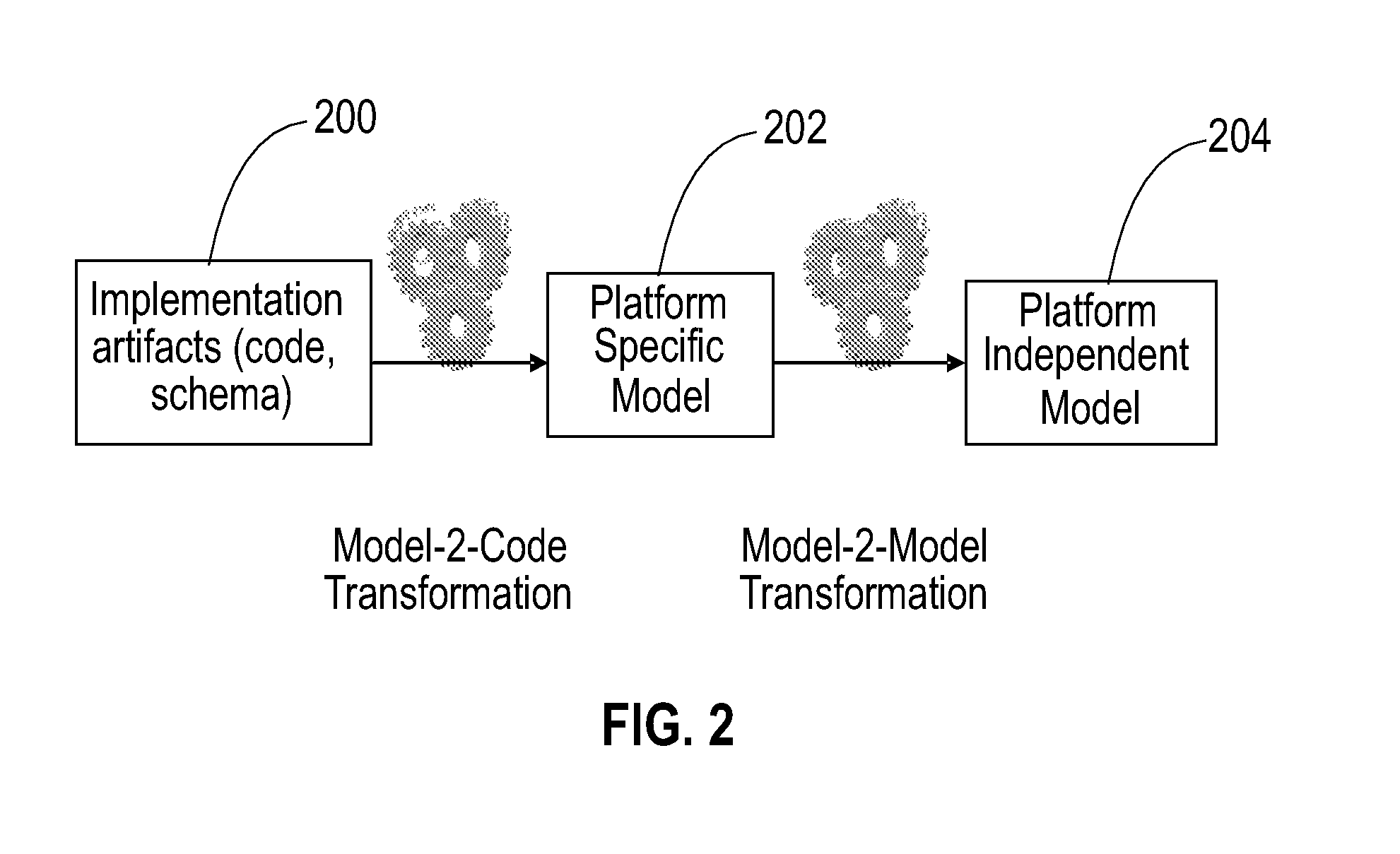System and a method for cross-platform porting of business applications and making them contexually-aware on target platforms
a business application and target platform technology, applied in the field of business services, can solve the problems of individual client solutions which tend to be expensive and time-consuming, pre-built solutions still need varying amounts of customization, and challenges to be overcome, and achieve the effect of porting the composite application from one platform
- Summary
- Abstract
- Description
- Claims
- Application Information
AI Technical Summary
Benefits of technology
Problems solved by technology
Method used
Image
Examples
Embodiment Construction
[0040]Disclosed herein is a system and method for cross-platform porting of composite applications. As used herein, “composite applications” refers to a new business application that is created by combining multiple existing functions. Also as used herein, a “platform” refers to a software middleware platform such as IBM's WebSphere, SAP's NetWeaver, BEA's WebLogic, and Oracle's Fusion platforms.
Extracting Platform Independent Models from Implemented Composite Applications
[0041]Referring to the block diagram of FIG. 1, briefly stated, the existing implementation artifacts of the composite, application are transformed into a corresponding platform specific model. The various blocks illustrated in FIG. 1 are illustrated in general therein and are illustrated in more detail hereinafter in conjunction with various embodiments of the invention. A meta-model for each of the PSM and the to-be-extracted PIM are prepared and mapping rules are specified between the two meta-models. The mappin...
PUM
 Login to View More
Login to View More Abstract
Description
Claims
Application Information
 Login to View More
Login to View More - R&D
- Intellectual Property
- Life Sciences
- Materials
- Tech Scout
- Unparalleled Data Quality
- Higher Quality Content
- 60% Fewer Hallucinations
Browse by: Latest US Patents, China's latest patents, Technical Efficacy Thesaurus, Application Domain, Technology Topic, Popular Technical Reports.
© 2025 PatSnap. All rights reserved.Legal|Privacy policy|Modern Slavery Act Transparency Statement|Sitemap|About US| Contact US: help@patsnap.com



